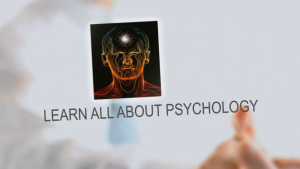‘Magnetic marketing’ is both fact- and psyche-based. Instead of being based on the combination of hard facts on the one hand, and true insights into customer behavior on the other, marketing and marketing communications too often are based on assumptions. How to best leverage psychology in B2B marketing?
Psychology in marketing: stepchild
Topics such as marketing/sales alignment, marketing accountability, online marketing, new media and sales methodologies (or myths for that matter) seem to get most attention in the marketing discipline. These are so-called ‘hard’ factors, reflecting an inside-out perspective seen from the company. Bloggers, managementbook authors and the ‘practitioners’ themselves such as marketing directors and heads of sales go to great lengths in stressing the customer and his or her key drivers are at the center of attention. Is this really the case?
These examples indicate marketing psychology often still is a stepchild:
– Customer service leaves much to be desired with many companies a long way away from the Zappos standard;
– Marketing often is not about inbound marketing (based on ‘pull’), but is based on ‘push’. Most emphasis is placed on sending messages to the target audience and on buying attention. Marketing done in a ‘disruptive, non-permission based’ fashion, as Seth Godin would put it;
– A seemingly strong and long term commitment between vendor and customer (for instance in IT Outsourcing) is no guarantee to outperformance: the vendor often scores a C- (or worse, as was shown in the recent publicity emanating from a Dutch public organisation (‘Waterschappen’) severing all ties to the Anglodutch IT company Logica);
– The process paradigm has become dominant over and above truly putting the customer at the center of attention (“the process prescribes an email is sent in the first 3 instances, upon which a letter is sent, and so on”);
– Customer ownership between and across departments often has not been made crystal clear resulting in overpromising and underdelivering to the customer;
– IT unmistakably is a significant ‘enabler’ in accelerating and intensifying customer contact. IT however can never be a substitute for real attention.
Decisions: 90% taken subconsciously
It is therefore essential to take the customer’s deeper motivations and drivers into account. Investigate what really moves customers instead of knowing the most promising RFP/ Request for Proposal by heart. Scientific surveys show that customers most often do not share their true motivations. According to Malcolm Gladwell, dr Robert Cialdini and Engagement Engineers Altuition , decisions almost always are taken subconsciously. A traditional questionnaire therefore does not suffice to lay bare one’s private or business decision making processes.
Make way for customer psychology
How can one put customer psychology to work in real life? By a combination of scientific insights, 1-to-1 conversations and online monitoring. Customer psychology is anything but a myth. It is all about the sheer necessity to (sustainably) gain the customer’s favour. It is also about putting the customer psychology into practice, in the operational deployment of communication moments and instruments. Small moments and instruments perhaps. Yet ones that can make all the difference in the customer journey.
Examples: law firm and insurances
Earlier this year, DutchmarQ was responsible for delivering a new marketing consulting programme to a midsized lawfirm. Their clients showed great appreciation for their informal, accessible way of working. This approach however only became apparent in the first face-to-face contact. In all written (offline and online) communications one had preferred the more safe, formal way of communications. Communicating the way laywers do, so to speak. By developing a common understanding of the so-called ‘customer journey’ this inconsistency in approach (and experience) came to the surface. Thereby building the insight for the need to implement a number of simple, yet effective changes.
Altuition enabled a health insurer serving over 4 million customers in the dutch marketplace to establishing a clear picture of the ‘question behind the customer question’. A customer changing address was seen as standard process that needed to be dealt with as efficiently as possible. Research showed that moving places from the customer’s personal perspective often is an emotional process. Customers for instance were concerned to know more about who to select as their next general practitioner and dentist. Data the insurance company quite easily already possessed. Asking a customer planning to move places whether he had contemplated a new general pracitioner and / or dentist therefore proved to be an easy and equally high-value service. Asking the very question resulted in significantly better customer experience and loyalty.
Inspiration
Earlier this Fall the CIC / Customer Insight Center symposium (liaised with the Rijksuniversiteit Groningen) about ‘customer psychology’ took place in the Netherlands. I had three very interesting interviews and conversations following the event with Joost Rutgers (partner at Altuition) and both keynote speakers at this conference: Janine Himpers (Altuition) and Jeroen Kruisweg (Canon). Our talks form the key source of inspiration of this blogpost (and some more, recently published in dutch). Should you want to learn more about their recent insights and experiences, here is how to follow Janine Himpers , Joost Rutgers and Jeroen Kruisweg on twitter.


Leave a Reply
Want to join the discussion?Feel free to contribute!